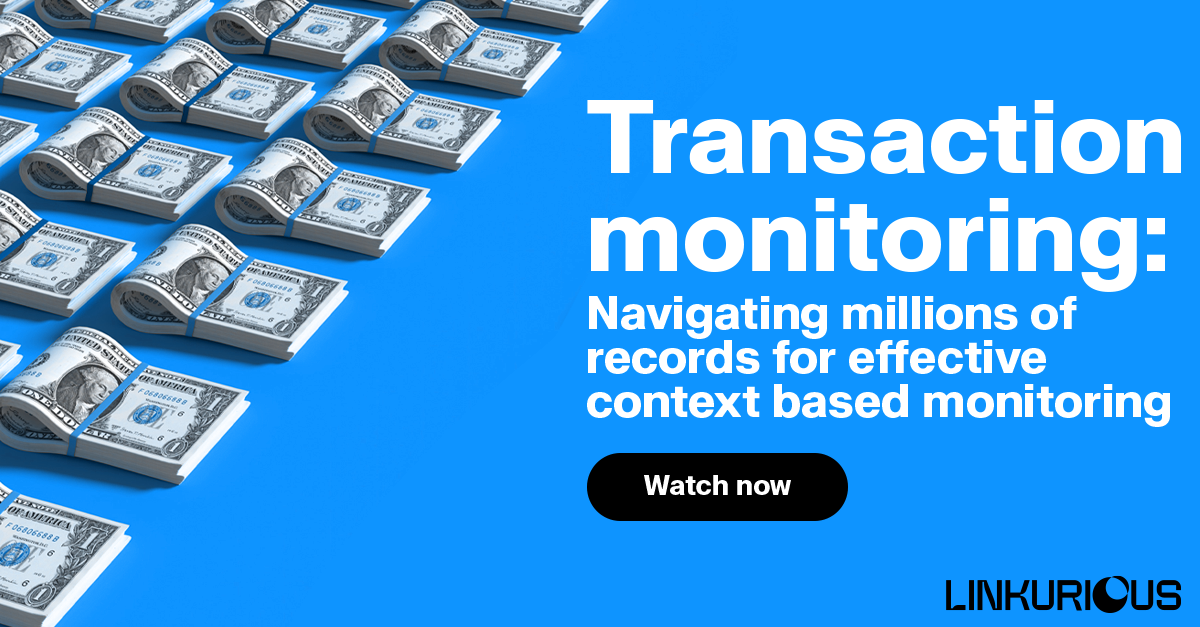Transaction monitoring in anti-money laundering (AML) stands as a frontline defense, inspecting millions of transfers, deposits, and withdrawals daily to identify suspicious activities that could indicate ongoing money laundering or other financial crime.
However, with the ever-evolving tactics of money launderers - and enormous quantities of transactions to monitor - traditional monitoring systems often struggle to keep pace. And when monitoring systems fall short, financial institutions can expose themselves to heavy fines and sanctions. In the US, banks have incurred nearly US$24 billion in non-compliance fines since 2008. Meanwhile, AML regulations continue to tighten, making measures to prevent financial crime more important than ever.
In this context, AML transaction monitoring is an essential piece of the compliance puzzle. This article explores the role transaction monitoring plays in anti-money laundering activities and looks at how technology can improve on traditional systems that may let suspicious activities slip through the cracks.
AML transaction monitoring is the process of rigorously tracking customer transactions, including transfers, deposits, and withdrawals. A transaction monitoring system (TMS) seeks out any suspicious behavior that may signal potential money laundering schemes or other financial crimes.
If a transaction is flagged as suspicious by the monitoring system, it requires investigation to determine whether the alert is a genuine indication of illicit activity or a false positive. In cases where true positives are detected by the TMS, financial institutions are obligated to file suspicious transaction reports (STRs) or suspicious activity reports (SARs).
Ongoing transaction monitoring is a legal obligation for many businesses covered by anti-money laundering rules. This notably includes banks, but also applies to lending organizations, money service businesses, remittance companies, casinos, etc.
Transaction monitoring is a vital component of anti-money laundering compliance programs. In addition to ensuring consumer protection and helping prevent crimes such as third-party fraud, it also plays a crucial role in catching money launderers in the act.
It’s also essential in staying compliant. Transaction monitoring is a mandatory component of money laundering regulations. Failure to adopt the tools needed to adequately detect or prevent money laundering activities can lead to severe consequences, including heavy financial penalties. It is not uncommon to see news stories like that of Deutsche Bank and its U.S. affiliates, which were fined $186 million for failing to adequately address money laundering control problems and other deficiencies previously identified by the U.S. central bank.
The law imposes an obligation on financial institutions not only to know their customers but also to understand the source of funds in customers’ accounts, as well as the reasons behind their transactions. This is why effective transaction monitoring requires a sophisticated combination of processes, technology, and human expertise.

While AML regulations mandate financial institutions to implement robust transaction monitoring systems, the sheer volume and complexity of financial transactions pose significant challenges.
Many AML transaction monitoring systems depend on static rules to flag potentially suspicious behavior. These systems do a good job of turning up known anomalies - but they don’t take context into account and often miss part of the picture.
These traditional rules-based monitoring systems also often generate a high number of false positives, overwhelming investigators with alerts and making it challenging to distinguish genuine threats from noise.
At the same time, money launderers are becoming increasingly sophisticated in disguising their illicit activities. They adapt to the rules flagged by transaction monitoring to fly under the radar, leading to false negatives.This underscores the necessity for institutions to adopt more advanced and adaptive solutions.
Businesses have many ways for conducting AML transaction monitoring, depending on factors such as sector, size, customer profile, and associated operational risk. While money laundering regulators do not provide specific guidance on the transaction monitoring process, organizations should seek out tools and processes that meet their needs and enable them to efficiently track down suspicious activity.
Graph technology has emerged as a particularly well-suited solution to streamline the transaction monitoring process and increase team productivity and reduce time wasted on false positives.
Graphs allow users to store, query, visualize and explore relationships between data points scattered across a wide range of data sources. That can include both internal data (like KYC data) and third-party data sources.
Graph analytics and visualization for transaction monitoring offer several benefits for transaction monitoring:
- Network visualization simplifies the understanding of contextual information, saving time on information retrieval.
- Graph solutions seamlessly integrate with other tools, allowing you to leverage graph analytics and graph embeddings to provide additional input to your machine learning models.
- Graph technology desilos data, providing an extended contextual environment and a 360-degree view of clients and their direct and indirect connections to enhance transaction monitoring in AML.
Through softwares like Linkurious Enterprise, your business can go beyond simple rules and build context into alerts. With powerful graph visualization and analytics capabilities, Linkurious Enterprise helps eliminate blindspots in transaction monitoring for more accurate and speedy detection and investigation.
To learn more about how graph technology can assist in AML transaction monitoring, watch our webinar and see a demo.
